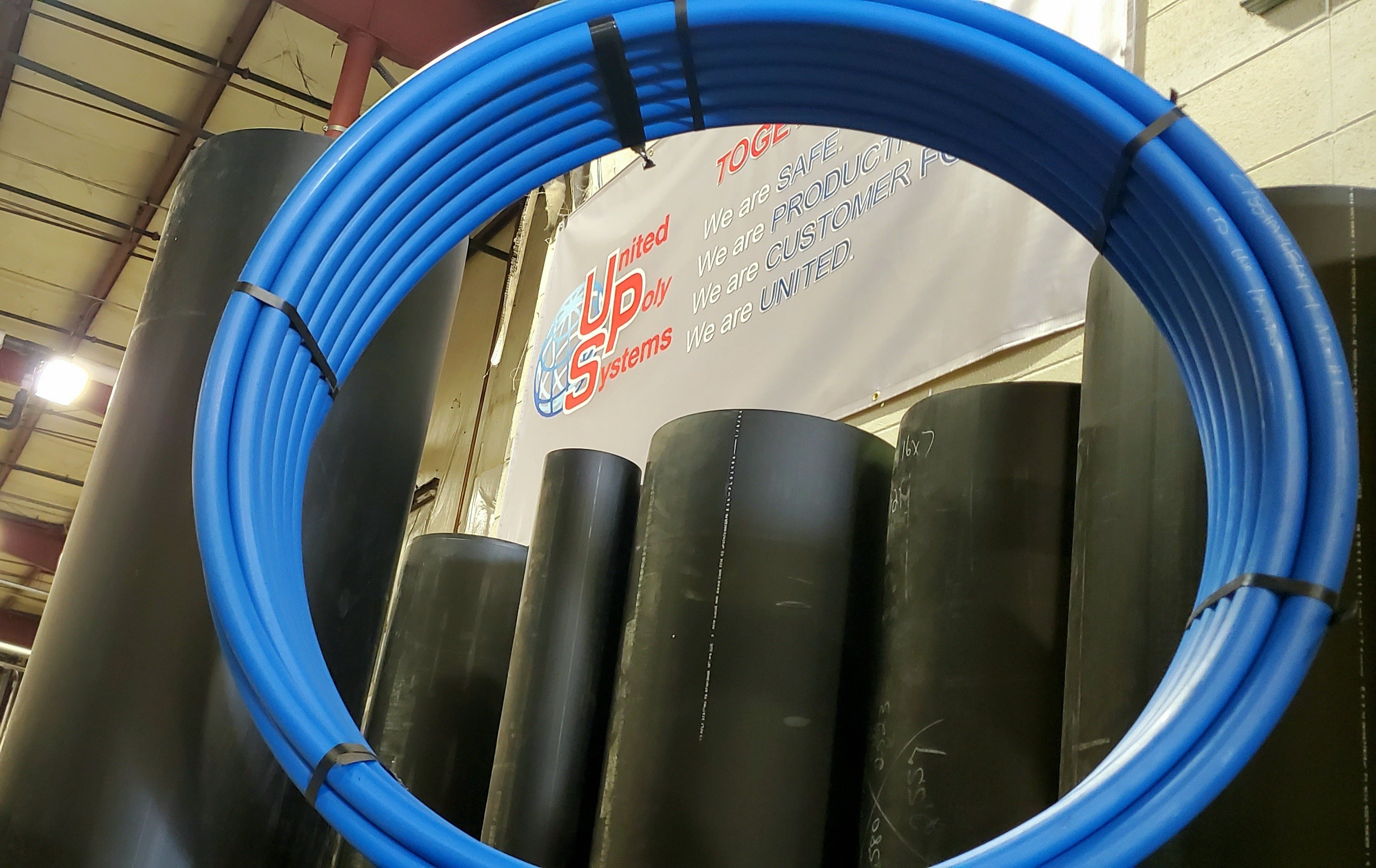Texas hdpe pipe manufacturer: Green Manufacturing
Wiki Article
Understanding the Secret Conveniences of HDPE Pipe for Water and Wastewater Administration
Using HDPE pipeline in water and wastewater monitoring presents various benefits that merit factor to consider. Its extraordinary durability and lengthy lifespan make it a favored choice for many tasks. In addition, the material's resistance to rust and chemical damage boosts its reliability in various environments. The advantages extend beyond simply durability and resistance. Pipe Supplier American Plastics Midland. Discovering its cost-effectiveness and ecological effect reveals much more engaging reasons for its extensive adoption in contemporary frameworkPhenomenal Sturdiness and Long Life

HDPE pipeline stands apart for its phenomenal toughness and long life, making it a preferred selection in water management systems. Built from high-density polyethylene, these pipelines can endure significant pressure and stress and anxiety, guaranteeing dependable efficiency with time. Their durable nature permits them to withstand severe ecological conditions, consisting of temperature fluctuations and dirt activities, which can create other materials to fall short.
The lifespan of HDPE pipelines typically surpasses half a century, offering an economical solution for towns and sectors alike. Additionally, the material's light-weight buildings simplify installation, minimizing labor costs and durations. This resilience decreases the demand for regular repair services or substitutes, even more improving its financial charm.
In water management applications, the integrity of HDPE pipes suggests fewer disturbances and enhanced service continuity, making them essential to sustainable infrastructure development. The combination of longevity and long life solidifies HDPE's role as a keystone in effective water monitoring services.

Resistance to Deterioration and Chemical Damages
While numerous products catch deterioration and chemical damage in time, HDPE pipelines exhibit remarkable resistance, making them optimal for different water administration applications. This resilience originates from the molecular framework of high-density polyethylene, which is inherently non-reactive and does not corrode like steels or break down from exposure to harsh chemicals. Consequently, HDPE is extremely effective in environments with hostile compounds, such as wastewater systems that might consist of acids, bases, and organic solvents.
Additionally, HDPE pipelines can stand up to environmental factors such as dirt acidity and saline conditions, better improving their suitability for varied applications (Pipe Manufacturing Midland TX). Their capability to maintain architectural stability over time lowers the danger of leaks and failings, which is important in making sure the security and reliability of water circulation and wastewater administration systems. The resistance to rust and chemical damages significantly adds to the overall efficiency and longevity of HDPE piping options.
Cost-Effectiveness and Economic Advantages
When considering the monetary implications of water monitoring systems, the cost-effectiveness of HDPE pipes comes to be apparent. These pipelines offer lower installment and maintenance expenses contrasted to typical materials like metal or concrete. Their light-weight nature simplifies transportation and installment, causing reduced labor costs. In addition, HDPE pipes display a lengthy life-span, frequently going beyond 50 years, which equates to less substitutes and long-lasting financial savings.The resistance of HDPE to rust and chemical damages reduces the requirement for costly fixings and substitutes. The pipelines additionally support effective water circulation, minimizing power costs linked with pumping systems. By alleviating leakages and water loss, HDPE pipes add to significant economic benefits for municipalities and sectors alike. Generally, the first financial investment in HDPE piping can yield substantial monetary returns over the here life expectancy of the water monitoring system, making it a sensible option for lasting infrastructure development.
Environmental Sustainability and Lowered Effect

Convenience and Adaptability in Installment
Since of their unique residential or commercial properties, HDPE pipelines supply remarkable versatility and adaptability in installment, making them ideal for a vast array of applications. Their lightweight nature allows for less complicated handling and transportation, reducing labor expenses and setup time. HDPE pipes can be bent and formed to fit numerous surfaces and project requirements, which is especially helpful in challenging environments.In addition, their resistance to rust and chemical damages enables for installation in varied settings without the demand for specialized safety finishings. The capability to fuse joints produces a continuous, leak-free system, boosting the total honesty and integrity of the installment. HDPE's versatility likewise fits ground movement, decreasing the danger of damage in areas vulnerable to shifting dirt. In general, these attributes make HDPE pipelines not just flexible but also a favored choice for water and wastewater monitoring systems.
Frequently Asked Concerns
Just How Does HDPE Pipe Contrast to PVC in Water Administration Applications?
HDPE pipe uses exceptional adaptability, resistance to rust, and toughness compared to PVC. Its lighter weight assists in much easier setup, while its lengthy life expectancy lowers replacement prices, making HDPE a favored selection in water monitoring applications.What Is the Life Expectancy of HDPE Water Lines Under Typical Problems?
Under common conditions, HDPE pipelines can have a life expectancy varying from 50 to 100 years. Their resilience and resistance to deterioration contribute to their long-lasting efficiency in numerous applications, making them a trusted selection for framework.Are HDPE Pipes Recyclable After Their Service Life?
Yes, HDPE pipelines are recyclable after their life span. American Plastics HDPE Pipe for Oilfield. They can be processed and repurposed into brand-new items, substantially minimizing environmental impact and promoting sustainability within the sector, making them an environmentally friendly choice for piping solutionsWhat Is the Installation Process for HDPE Piping?
The installation process for HDPE pipes includes website preparation, trenching, pipe fusion or mechanical joining, backfilling, and pressure testing. Correct strategies ensure a durable and reliable system for transferring water and wastewater efficiently.Can HDPE Piping Be Used for Both Drinkable and Non-Potable Water Systems?
Yes, HDPE pipelines can be utilized for both potable and non-potable water supply. Their flexibility, longevity, and resistance to corrosion make them ideal for numerous applications, making sure risk-free and effective transport of water in different contexts.Report this wiki page